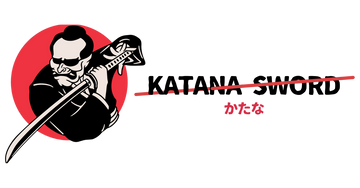Choosing the Steel of your Katana
There are several types of steel and forges for a Katana. This is one of the parameters that most influences the price of your Katana, as the blade is the main element.
We will explain the advantages and disadvantages of these different types.
MARU Steel Katana ($200-400)

A type of steel Maru the blade is composed of only one steel. This is the first method of forging that allows for greater simplicity and lower costs.
The carbon content varies with the steel and is very important in this forging. It has a direct impact on rigidity, price and quality (generally between 0.4 and 1% carbon).
>T10 steel: This is the highest grade of Maru steel. The carbon content is the highest (slightly over 1%). Its blade is softer and stronger than all other Maru steels. A blade of this type is perfect for people with an intermediate budget who want to practice cutting.
>1045 steel: This steel is hard, but offers an interesting flexibility. This steel allows to have an interesting blade with traditional techniques for beginners with a rather low price.
>1095 steel: This steel is a little more high-end than the others in its price range. Its blade is harder and sharper and therefore more suitable for cutting. On the other hand, it is more likely to break if you make too many mistakes in your cutting.
>Manganese steel: Very little known, Manganese steel allows you to buy a Katana at a very interesting price. More for decoration than cutting, our manganese Katanas will often stand out with unique blades and sheaths.
Learn more about manganese :
Manganese steel is very special. When you add 2-4% manganese to steel, it is very brittle and breaks easily. On the other hand, by increasing its manganese content, the steel becomes resistant and quite flexible.
This is exactly what we are looking for in a Katana. It is therefore possible to have a strong, rather sharp and flexible steel at the same time thanks to a manganese content that we keep secret.
It is good to know that this steel is more for amateurs and for decoration, but you can perfectly start cutting with it.
Laminated Steel Katana ($300-500)

With Damascus steel, your blade is made of two different types of steel. A hard steel and a softer steel. The steel is based on the combination of these two layers by stacking. A Damascus blade is a blade with several thousand layers.
This forging method is more complex than the Maru method and requires more resources. In addition to offering a perfect mix of stiffness and flexibility in the blade, it has a unique aesthetic that you can easily recognize.
This higher end steel is great for cutting, but it is often collected by our customers for its blade that offers a special touch to their decoration.
In our collection, we also have Damascus blades with fire clay Hamon. These blades are great for cutting.
>Damascus steel
Katana Forge Kobuse type ($900+)

This is a composite blade that is formed from several steels with a traditional Japanese forge.
This blade is forged to have a hard steel (Hagane) on the outside and a soft steel (Shigane) on the inside. This allows for a blade that is very sharp on the outside, but can easily withstand blows without breaking due to the softness of the blade's interior.
This Katana is designed for the experienced who wish to perfect their cutting skills with a Katana that will last a lifetime.
>Kobuse Katana
Katana Forge Type San-Mai ($700+)

The San-Mai Forge is made of 3 parts with a soft steel inside and a stiffer and sharper steel outside. It offers a unique sharpness and rigidity to allow cutting without difficulty and a softness in the center to take the blows without risking to break the blade.
On the two parts at the end we find a steel folded in several layers which can be a 1060 steel or even a Damascus steel which offers a unique visual.
We more often use a T10 steel with a Damascus and Hamon steel. This assembly is more premium than 1060 + 1095 and offers a more interesting blade design.
A Katana with this blade is rather flexible and is similar to the Katanas that the Samurai had in the Edo period.
With a San-Mai forge, you will have no worries about practicing cutting on Tatami or Bamboo. Our Katanas with this type of forge are entirely hand forged and are detailed in the entire nomenclature.
>Sanmai Katanas
